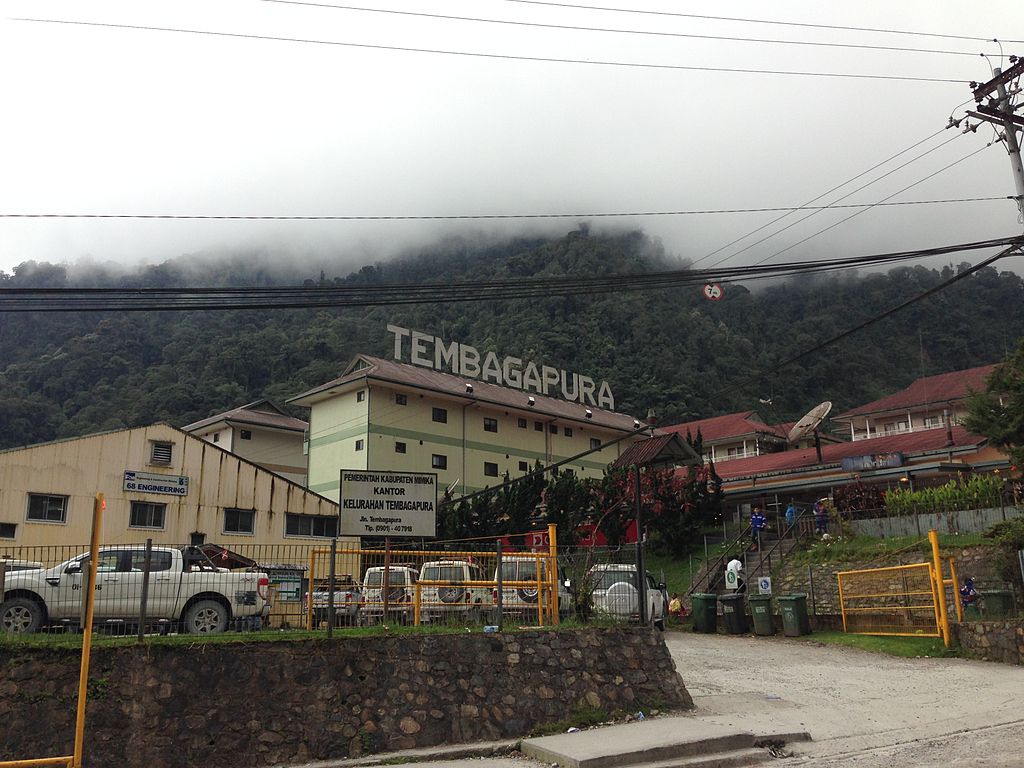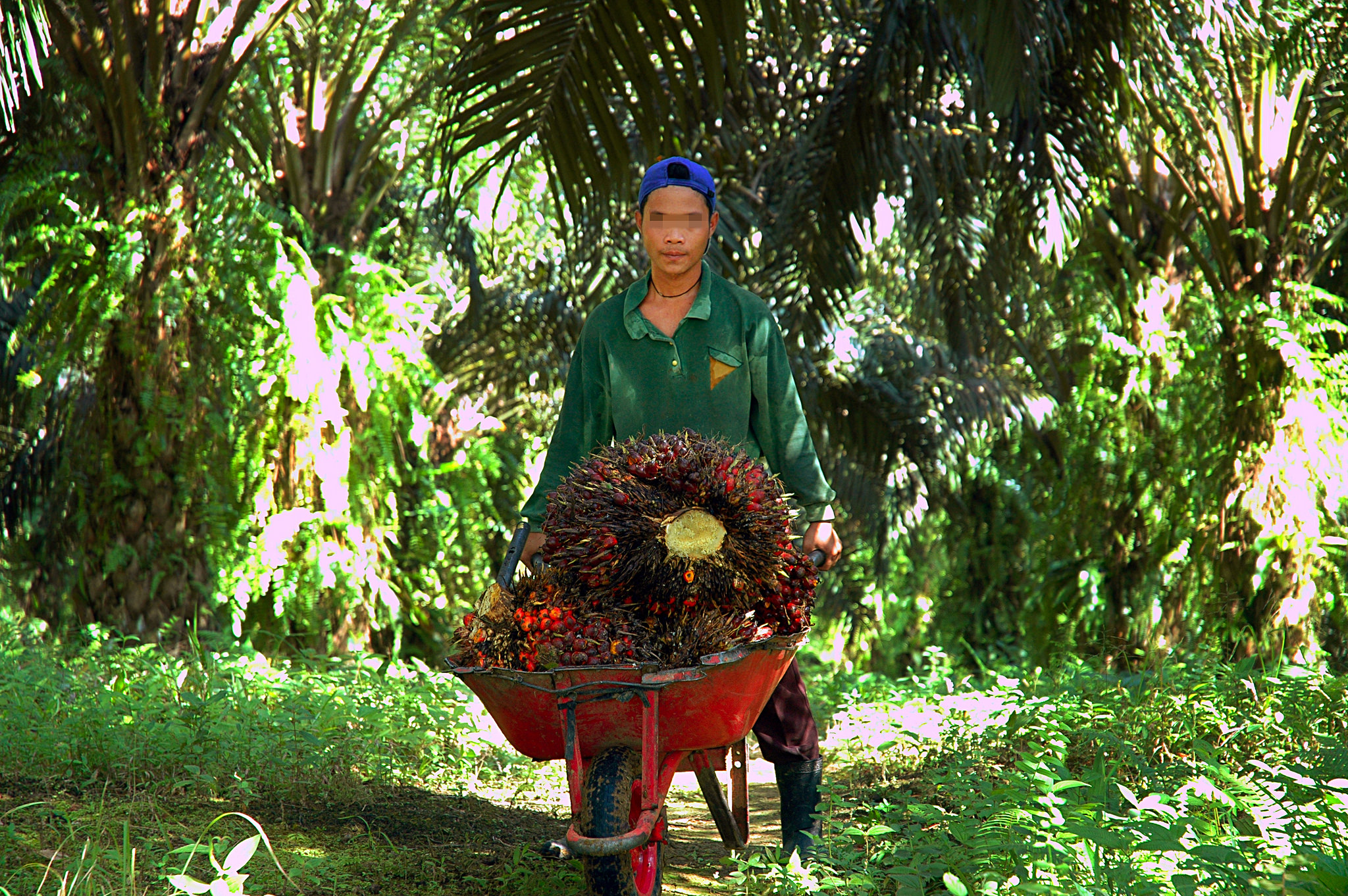The benefits of more concentrated natural resources are less likely to be spread
The fall of President Suharto in 1998 and the subsequent democratisation and decentralisation ushered in two concurrent resource booms: in the mining sector, including oil and gas extraction, coal mining and mineral extraction; and in the cultivation, processing and exporting of palm oil. Indonesia is the world’s leading supplier of both palm oil and thermal coal, and the largest resource-dependent country.
Although both booms have been principally driven by the large increase in external demand in emerging economies, decentralisation enabled, facilitated, and shaped resource-driven economic growth. At the same time, poverty alleviation has been a primary social policy objective of the last two Indonesian presidents. The poverty headcount fell from 23 per cent in 1999 to 11 per cent in 2014, yet around a third of the population – almost 100 million people – remain below, or vulnerable to falling below, the poverty line. How has Indonesia’s recent extractives-led economic growth affected national poverty alleviation efforts?
First, a word of caution. The development impacts of resource extraction in Indonesia are not well understood. This is in no small part due to the challenge of separating out the causal effects of the resource sector from confounding local, regional, and national factors. One cannot simply address this question through a before–after comparison of a mining project, or comparison with a nearby region without a mine.
It is usually difficult – if not impossible – to rule out confounding factors when assessing the development impacts of the resource sector. Booming regions often differ in their initial levels of development and trajectories. Sometimes this encourages resource extraction. Sometimes such regions converge with others as a result of national economic growth and social programs, irrespective of mining activities. Most empirical studies and opinions on these matters are best viewed with a healthy dose of skepticism.
Local employment, investment, and social ills
The development impacts of natural resource sectors can be classified into direct and indirect effects. Direct effects include employment, investment, social conflict and pollution in local communities. Indirect effects come through the redistribution of government resource revenues, and through impacts of the boom on people employed in non-resource sectors of the economy. The relative importance of these effects and whether they are positive, negative or neutral depends on the concentration of the natural resources in question.
I explored development impacts of natural resource sectors with three quantitative case studies in my PhD thesis. The giant natural gas project in the Bintuni Bay of Papua – a highly concentrated and capital-intensive project – does not appear to have a discernible impact on local welfare and poverty outcomes. Less concentrated coal mining in the Tapin district of East Kalimantan appears to have helped reduce local poverty.
However, there is little systematic evidence that mining has significantly contributed to poverty reduction. In a 2015 province-level study, Sambhit Bhattacharyya and Budy Resosudarmo found that mining growth had no clear impact on poverty, and that sharp accelerations in the mining sector exacerbated it. In contrast, they found non-mining growth does correspond to poverty reduction.
To compare, at the other end of the spectrum of resource concentration is palm oil cultivation. Over the past two decades there has been a rapid increase in palm oil production. This is mainly through an increase in the area under cultivation, which draws heavily on forest and land resources to expand production of this labour- and land-intensive crop. In order to sell their harvested fruit into global supply chains, farmers need a direct link to a processor (or an indirect link, for example through a trader or loading ramp) and the ability to transport fruit to a mill within 48 hours of harvest. As they are increasingly dependent on smallholders for supply, private firms have been known to take on such infrastructure investments instead of waiting for the government.
In contrast to mining, an emergent body of empirical work suggests that oil palm booms have reduced local poverty, improved local nutritional outcomes and delivered clear and positive benefits for cultivating communities across the outer islands. To some extent, this reflects the shift from a sector once dominated by large industrial plantation estates to one in which the fastest-growing subsector has been independent smallholders – either new farmers or existing farmers expanding their plots. Smallholder versus estate oil palm farming is analogous to artisanal versus large-scale mining activities. Similarly, there might be greater diffusion of local effects if more people are included in the supply chain and greater investments are made in local infrastructure for small-scale suppliers.
Impacts on local services
In Indonesia’s case, the extraction of natural resources is often motivated by the national interest enshrined in the constitution. Resource sector policy focuses on distributing the benefits of the nation’s natural wealth within and across generations. But although poverty reduction has continued throughout the resource booms, inequality has widened dramatically. Bhattacharyya and Resosudarmo found that non-mining growth clearly corresponded to reductions in inequality, but mining growth did not. If a local economic boom increases the potential revenue of the local government, booming regions should develop the capacity for additional service delivery, an important consideration when a great deal of service delivery has been decentralised.
Resource extraction delivering local benefits for communities should, at least in theory, lead to lower demand on social services, and negative effects should lead to greater demand. In any case, if local governments are effectively taxing investors, they should have greater capacity for redistribution and improving local service delivery. Whether this takes place in practice is an important empirical question, and the answer is likely to differ across regions. In the Papuan context, Tom Pepinsky found precisely the opposite: the onset of resource revenues was followed by slower growth in village electrification.

Tembagapura, PT Freeport's company town in Indonesia. Research has found that increasing resource revenue is met by slower village electrification in Papua. (Wikimedia Commons)
Perhaps more important than the direct local impacts and fiscal effects are the impacts on other sectors of the economy. These impacts are usually viewed through the lens of ‘Dutch disease’ theory, where a booming resource sector can lead to a decline in in some other tradable sectors, like manufacturing. These other sectors can often generate more and better jobs.
Impacts on non-mining sectors
In the case studies discussed above, I found that different resource booms differentially affect other sectors in the local economy. While all delivered both an aggregate boost and improvement in the sectors directly engaged, mining and natural gas extraction appears to crowd out agriculture. This is an important consideration for anti-poverty policy, as agriculture is the main source of livelihood in the countryside, especially among those with lower incomes. Manufacturing impacts could not be disentangled from non-mining manufacturing, as mining processing is classified as manufacturing in sub-national accounts, but I found little impacts on services.
In a recent study, however, James Cust, Torfinn Harding and Pierre-Louis Vezina analyse the impacts of oil and gas booms on manufacturing firms. Using data from the Indonesian Manufacturing Census and corporate data on oil and gas exploration and production, they found that local oil and gas windfalls are associated with increases in firms’ output, wages and labour productivity. These results suggest that firms have been able to overcome the potential negative effects of resource booms on manufacturing by capitalising on the increased local demand generated by resource booms, and by increasing productivity. Although these findings collectively suggest little reason for concern, districts with a greater share of their output in oil, gas, and coal and mineral mining still tend to have poorer health and education outcomes than neighboring districts with similar incomes.
For the oil palm boom however, districts that expanded oil palm cultivation more rapidly during the 2000s experienced an increase in total agricultural and manufacturing output, but not improvement in services. There is also evidence of greater electrification and improved roads, suggesting potential spillovers to other sectors of the economy through these channels, which are often viewed as critical constraints to rural development.
One of the more interesting findings emerging from the field components of this research was the common theme of children in successful oil palm villages studying away from home, usually in the cities. When asked whether they would return to the farm, they often responded that they hoped not. Who would then take care of the farm as they got older? ‘It doesn’t matter.’ How a booming resource sector – whether labour-intensive agriculture or capital-intensive mining – shapes the nation’s skilled labour market and human capital pipeline is a complex and important issue deserving more research and policy attention.
Wrapping up, has natural resource extraction reduced poverty in the post-Suharto era? We can be reasonably confident the oil palm boom has made strong contributions to local poverty reduction, but how it has affected the welfare of lower-income people in non-booming regions and cities remains an open question. For mining, there is little evidence that resource-driven growth has made any contribution to improving the welfare of the poorest. Given current social policy objectives and the sector’s environmental impacts, slowing demand for Indonesia’s mining exports could be seen as an opportunity.
Ryan Edwards (ryan.b.edwards@dartmouth.edu) is a development economist at Dartmouth College, Hanover, New Hampshire, US. Twitter handle: @ryanbedwards
Terjemahan artikel ini disini.












